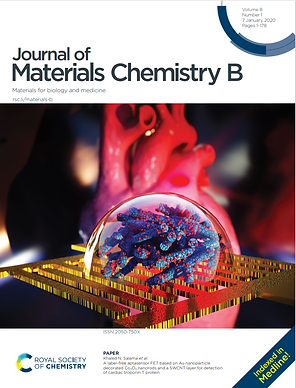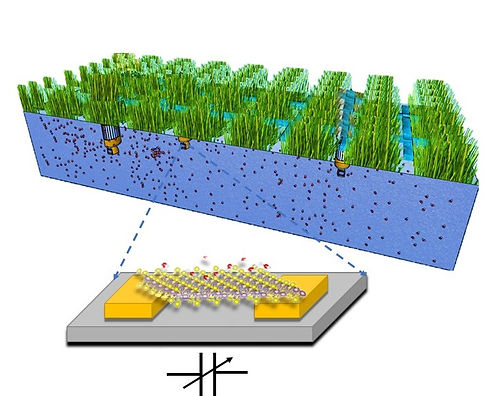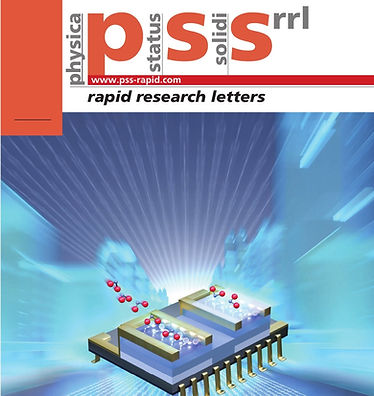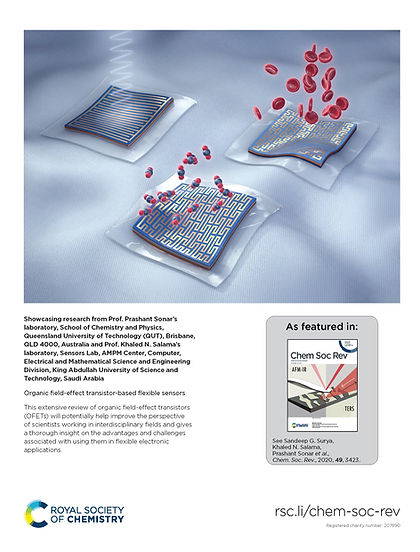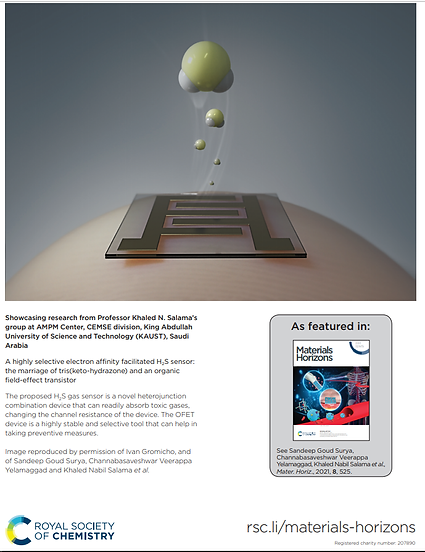Swindon, UK
Research
Work
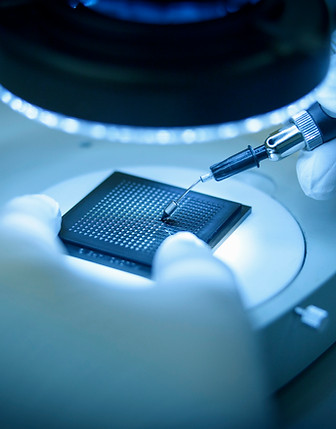
Projects Handled:
-
A label-free aptasensor based on Au nanoparticles decorated Co3O4 nanorods and SWCNTs for detection of cardiac Troponin T protein
Leads: Sandeep Surya and Sanjit Majhi
KAUST only
Here, we demonstrated the dependence of sensitivity on the modification of channel layer of field-effect transistor (FET) device. Gold decorated Co3O4 nanorods on interdigitated electrode substrate in FET configuration proved to be a sensitive layer. And here we achieved a sensitivity of approximately 250% more than that of the SWCNTs and Co3O4 nanorods combination. Also, we confirm that the reduction in channel current originates from the electron transfer to the p-type channel mediated by the Au decorated Co3O4 NRs. Moreover, morphological properties of Co3O4 NRs and Au decorated Co3O4 NRs were presented through SEM and TEM images, which confirm the shape, size and agglomeration details of both NRs and NPs. This is the first step in utilizing the Co3O4 NRs as a sensing material in FET geometry for the detection of Troponin-T protein in a controlled way, which opens a new research avenue to utilize this material for potential novel applications.
2. 2D materials based devices as capacitive sensors for in-situ soil moisture applications
Leads: Sandeep Surya and Saravanan Y
KAUST and IITB
In-situ soil moisture sensors using advanced materials plays a promising role in future autonomous agriculture industry for water uptake and cut-off by plants. However, open challenge for these sensors is to monitor the changes in capacitance rather than resistance for reliable, suitable materials with high performance, scalability and abundance of the active channel material. Here, a series of 2D materials such as Graphite oxide (GO), Molybdenum disulfide (MoS2), Vanadium oxide (V2O5), Molybdenum oxide (MoO3) are tested in realizing a receptor layer that can sense soil moisture in an efficient way by using Si/SiO2 based electrode platform as the base substrate with bottom interdigitated gold electrodes array with orthogonal sensing capability. a sensor platform that can detect soil moisture with a simple capacitive device and can work at a range of temperatures.
3. PDVT-10 and MOF OFET: highly selective and sensitive NO2 sensor with excellent stability
Lead authors: Saravanan Y and Sandeep Surya
KAUST
Here, for the first time, a highly selective, sensitive, and ambient stable Poly{3,6-dithiophen-2-yl-2,5-di(2-decyltetradecyl)-pyrrolo(3,4-c)pyrrole-1,4-dione-alt-thienylen-evinylene-2,5-yl} (PDVT-10) based OFET NO2 sensor is reported. Additionally, the PDVT-10 device was modified via coating with a porous MOF, which exhibited a 700% increase in the sensitivity towards 100 ppm NO2 without affecting the selectivity of pristine PDVT-10 device. We achieved a record breaking detection limit of 8.25 ppb, which is the lowest to date, among all the reported NO2 sensing transistors. The improved sensing performance in detecting NO2 is due to the synergistic interaction between the MOF coating and PDVT-10, which is demonstrated with the help of Kelvin Probe Force Microscopy (KPFM), UV-Vis-NIR Spectroscopy and Photoelectron yield spectroscopy in air (PYS). The synergistic combination achieved a sensitivity of 680 nA/ppb with negligible response (4.232 nA/%RH) towards humidity in the range of 5% - 90% RH.
4. Fully Integrated Indium gallium zinc oxide NO2 gas detector
Leads: Sandeep Surya and Mani Teja
KAUST
We realized an amorphous indium gallium zinc oxide (IGZO) based toxic gas detection system. The microsystem contains an IGZO thin film transistor (TFT) as a sensing element and exhibits remarkable selectivity and sensitivity to low concentrations of nitrogen dioxide (NO2). In contrast to existing metal oxide based gas sensors, which are active either at high temperature or with light activation, the developed IGZO TFT sensor is operable at room temperature and requires only visible light activation to revive the sensor after exposure to NO2. Furthermore, we demonstrate air-stable sensors with an experimental limit of detection of 100 ppb. Unlike most existing gas sensing systems that take care of identifying the analytes alone, the developed IGZO microsystem not only quantifies NO2 gas concentration but also yields 5-bit digital output. The compact microsystem incorporating readout and analog to digital conversion modules developed using only two TFTs, paves the way for inexpensive toxic gas monitoring systems.
5. MXene: Mo2CTx based chemiresistor device for Toulene sensing
Volatile organic compounds (VOCs) detection is targeted in this work with the help of chemi-resistive devices based on Mo2CTx Mxene material. Devices were tested with multiple VOCs like benzene, toluene, acetone, IPA, ethanol and methanol. And we realized the selectivity of the device towards Toulene alone with a sensitivity of 130%/ppm. DFT simulations also provide the selectivity information for Toulene while executed for Mxene with –F, -OH and –O functional groups. Few more experiments are in progress to establish the sensitivity.
Collaborator name: Sandeep Surya and Wenzhe Guo
KAUST
